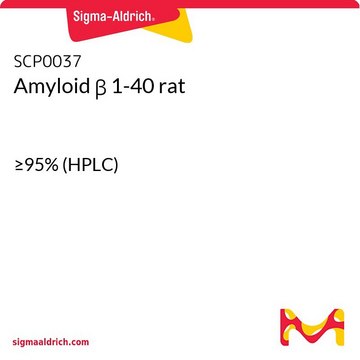A4559
Amyloid β-Protein Fragment 25-35
≥97% (HPLC)
About This Item
Produits recommandés
Niveau de qualité
Essai
≥97% (HPLC)
Forme
powder
Composition
Protein Content, ≥80%
Numéro d'accès UniProt
Température de stockage
−20°C
Chaîne SMILES
CCC(C)C(NC(=O)C(NC(=O)C(C)NC(=O)CNC(=O)C(CCCCN)NC(=O)C(CC(N)=O)NC(=O)C(CO)NC(=O)CN)C(C)CC)C(=O)NCC(=O)NC(CC(C)C)C(=O)NC(CCSC)C(O)=O
InChI
1S/C45H81N13O14S/c1-9-24(5)36(43(69)50-21-35(63)52-29(17-23(3)4)40(66)55-28(45(71)72)14-16-73-8)58-44(70)37(25(6)10-2)57-38(64)26(7)51-34(62)20-49-39(65)27(13-11-12-15-46)54-41(67)30(18-32(48)60)56-42(68)31(22-59)53-33(61)19-47/h23-31,36-37,59H,9-22,46-47H2,1-8H3,(H2,48,60)(H,49,65)(H,50,69)(H,51,62)(H,52,63)(H,53,61)(H,54,67)(H,55,66)(H,56,68)(H,57,64)(H,58,70)(H,71,72)
Clé InChI
WIHBNMPFWRHGDF-UHFFFAOYSA-N
Informations sur le gène
human ... APP(351)
Vous recherchez des produits similaires ? Visite Guide de comparaison des produits
Amino Acid Sequence
Description générale
Application
- to induce neurotoxicity in cortical cultures
- to induce Alzheimer′s disease in rat model
- to induce apoptosis in mesenchymal stem cells (MSCs)
Actions biochimiques/physiologiques
Autres remarques
Code de la classe de stockage
11 - Combustible Solids
Classe de danger pour l'eau (WGK)
WGK 3
Point d'éclair (°F)
Not applicable
Point d'éclair (°C)
Not applicable
Équipement de protection individuelle
Eyeshields, Gloves, type N95 (US)
Faites votre choix parmi les versions les plus récentes :
Déjà en possession de ce produit ?
Retrouvez la documentation relative aux produits que vous avez récemment achetés dans la Bibliothèque de documents.
Les clients ont également consulté
Articles
Alzheimer's disease (AD) is the most common cause of dementia in the elderly and is characterized by gradual loss of cognitive functions.
Notre équipe de scientifiques dispose d'une expérience dans tous les secteurs de la recherche, notamment en sciences de la vie, science des matériaux, synthèse chimique, chromatographie, analyse et dans de nombreux autres domaines..
Contacter notre Service technique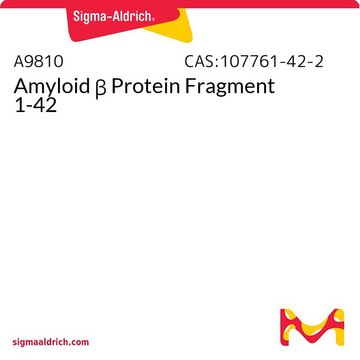

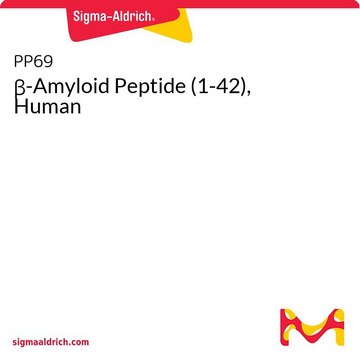

![[Ala28]-Amyloid β 25-35 ≥95% (HPLC)](/deepweb/assets/sigmaaldrich/product/images/306/938/dd9f7c72-cfca-4ea3-8e10-a7a2a7994639/640/dd9f7c72-cfca-4ea3-8e10-a7a2a7994639.jpg)

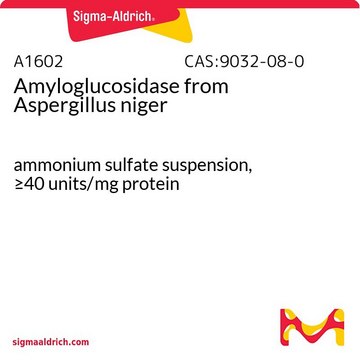
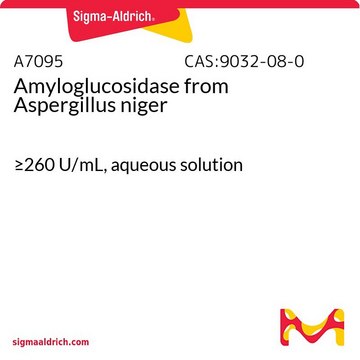

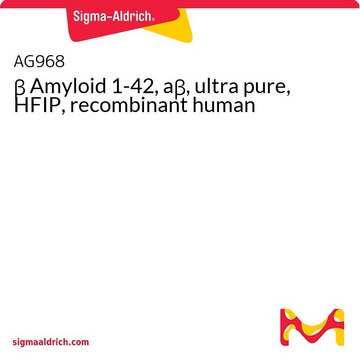

![[Arg13] Amyloid-β-Protein Fragment 1-40 ≥80% (HPLC), lyophilized powder](/deepweb/assets/sigmaaldrich/product/images/132/249/f6ab5ff8-bec9-4c18-b8b8-7b6bc8f9d58e/640/f6ab5ff8-bec9-4c18-b8b8-7b6bc8f9d58e.jpg)
